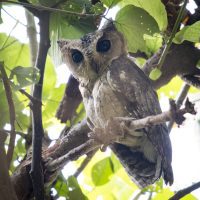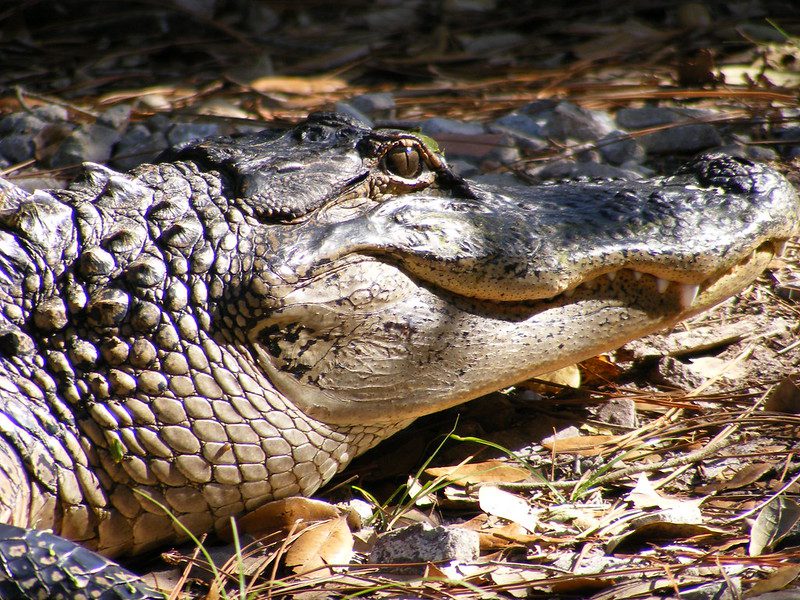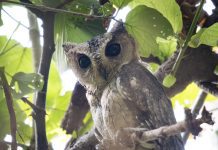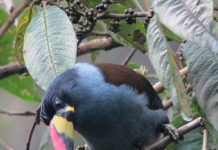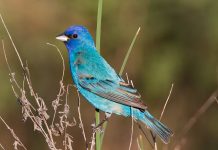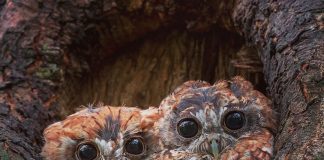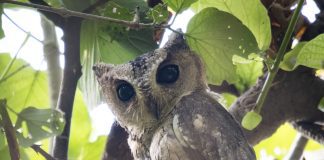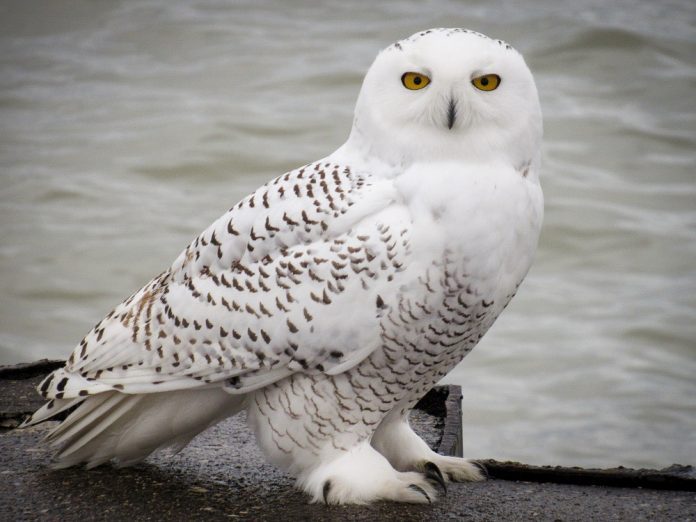
The Beautiful Snowy Owl Description
The snowy owl is a large, beautiful white owl native to the Arctic regions of North America and Eurasia. These majestic birds are known for their striking appearance, with bright white feathers and piercing yellow eyes. They are also known as the polar owl, arctic owl, or white snow owl.
Snowy Owl’s scientific name
The scientific name for the snowy owl is Bubo scandiacus. This species is classified in the order Strigiformes, which includes all owls, and the family Strigidae, which includes the true owls. The genus name, Bubo, is derived from the Latin word for owl, while the species name, scandiacus, refers to the snowy owl’s native range in the Scandinavian region.
The appearance of the Polar Owl
The snowy owl is a large bird, with females weighing up to 4.5 pounds and males weighing up to 3.3 pounds. They have a wingspan of up to 5 feet, making them one of the largest owl species in the world.
Their feathers are pure white, with some black markings on the tips of the wings and tail. The female snowy owl is slightly larger and heavier than the male, but both sexes have similar markings.
Male Snowy Owl
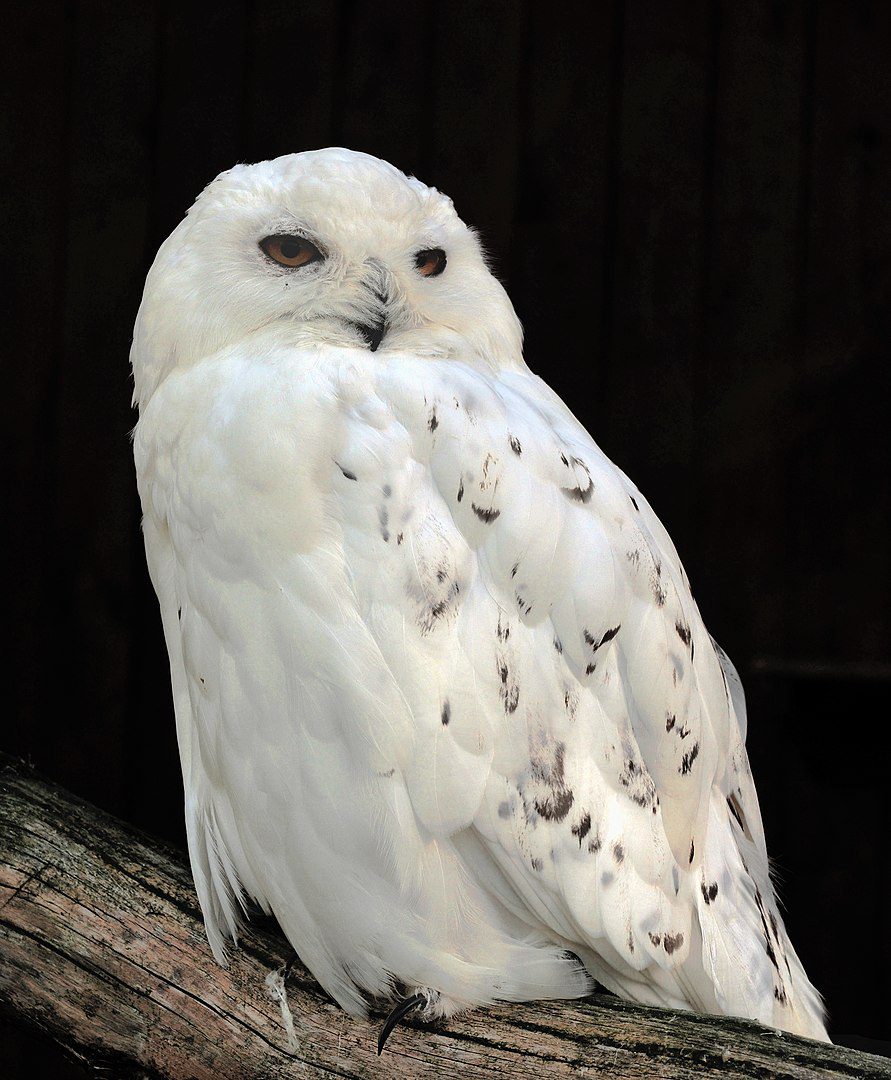
The male snowy owl is slightly smaller and lighter than the female, weighing up to 3.3 pounds compared to the female’s weight of up to 4.5 pounds. Both sexes have similar markings, with pure white feathers and some black markings on the wings and tail.
However, the male snowy owl tends to have fewer black markings than the female. Like the female, the male snowy owl is a skilled hunter and is active during the day.
They are found in the Arctic tundra and may migrate south in search of food during the winter months. The male snowy owl also plays a role in reproduction, bringing food to the female during the nesting period and helping to care for the chicks.
Female Snowy Owl
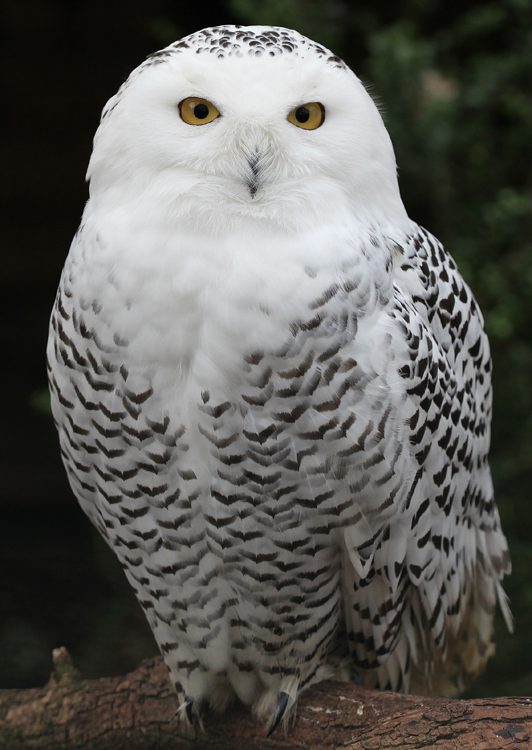
The female snowy owl is slightly larger and heavier than the male, weighing up to 4.5 pounds compared to the male’s weight of up to 3.3 pounds. Both sexes have similar markings, with pure white feathers and some black markings on the wings and tail. However, the female snowy owl tends to have more black markings than the male.
Like the male, the female snowy owl is a skilled hunter and is active during the day. They are found in the Arctic tundra and may migrate south in search of food during the winter months. The female snowy owl also plays a key role in reproduction.
Young Owls
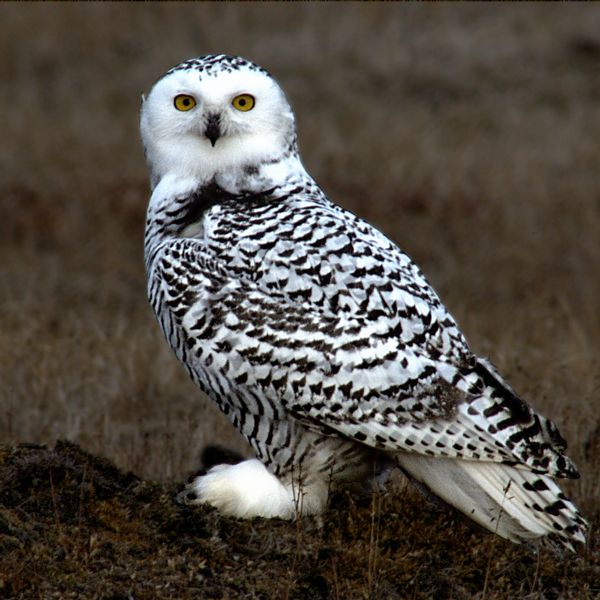
Young snowy owls, also known as chicks or owlets, are born in the spring and are typically ready to fledge (leave the nest) at around 8-10 weeks old. Snowy owls are monogamous, and both males and females play a role in raising the young.
The female snowy owl lays a clutch of 2-11 eggs and incubates them for about a month. After the chicks hatch, the female helps to care for them while the male brings food to the nest.
Snowy owl chicks are covered in downy feathers and cannot fly when they first hatch. They rely on their parents for warmth and protection and are fed a diet of small mammals, birds, and fish that the parents bring to the nest. As the chicks grow, they begin to develop their adult feathers and become more independent.
Young snowy owls are vulnerable to a variety of threats, including predators, disease, and a lack of prey. However, snowy owls are adaptable and resilient, and many young birds are able to survive and fledge successfully. After they leave the nest, young snowy owls continue to rely on their parents for a period of time before becoming fully independent.

Size and Wingspan
The snowy owl is a large bird with a wingspan of up to 5 feet, making it one of the largest owl species in the world. The female snowy owl is slightly larger and heavier than the male, weighing up to 4.5 pounds compared to the male’s weight of up to 3.3 pounds.
Despite their large size, snowy owls are skilled fliers, able to soar over the Arctic tundra in search of prey. Their wings are broad and round, with densely packed feathers to provide insulation in the cold climate.
Snowy owls are also adapted to living in cold environments, with thick feathers and a round body shape that helps them retain heat.
10 Facts About This Beautiful Snowy Owl
- The snowy owl is a large bird with a wingspan of up to 5 feet, making it one of the largest owl species in the world.
- Snowy owls are native to the Arctic tundra and are well-adapted to living in cold environments.
- These birds are known for their striking white feathers and piercing yellow eyes, which allow them to spot prey from great distances.
- Snowy owls are skilled hunters, preying on small mammals, birds, and fish. They are mostly active during the day and hunt by perching on a high point and watching for prey.
- The female snowy owl is slightly larger and heavier than the male, weighing up to 4.5 pounds compared to the male’s weight of up to 3.3 pounds.
- Both sexes of the snowy owl have similar markings, with pure white feathers and some black markings on the wings and tail. However, the female snowy owl tends to have more black markings than the male.
- Snowy owls are migratory birds that may migrate south for food during the winter months. They have been known to travel as far as the Great Lakes region in North America and the British Isles in Europe.
- Snowy owls are vocal birds and are known for their deep hoot, which they use to communicate with other snowy owls and establish territory.
- During the breeding season, snowy owls use a series of soft, melodic whistles as a song to attract a mate and establish a bond with their partner.
- Snowy owls are protected under the Migratory Bird Treaty Act in the United States and the Convention on the Conservation of Migratory Species of Wild Animals in Europe. Conservation efforts are ongoing to protect and preserve the snowy owl and its habitat.
Snowy Owl in Flight
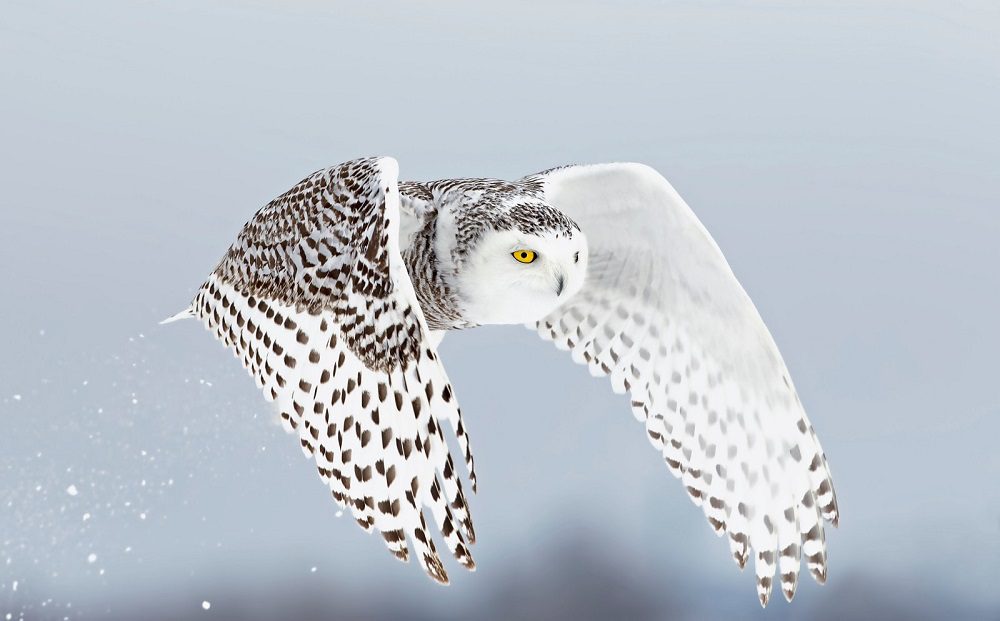
The snowy owl is a magnificent bird of the Arctic, known for its striking white feathers and piercing yellow eyes. These majestic creatures are skilled fliers, able to soar through the air with grace and precision.
As the snowy owl takes to the sky, its wings spread wide, revealing the broad, round feathers that allow it to navigate the harsh Arctic winds. The wingspan of the snowy owl can reach up to 5 feet, making it one of the largest owl species in the world.
Despite their size, snowy owls are agile and agile in flight, able to swiftly change direction and dive towards their prey. They are skilled hunters, using their excellent eyesight and hearing to spot small mammals, birds, and fish from great distances.
As the snowy owl glides through the air, it is a sight to behold, a symbol of the wild beauty of the Arctic. Whether soaring above the tundra or perched atop a snowy hill, the snowy owl is a true master of the skies. So next time you visit the Arctic, keep an eye out for these magnificent birds in flight – it is a sight you will never forget.
Snowy Owl Characteristics & Behavior
Snowy owls are mostly active during the day and hunt by perching on a high point and watching for prey. They are skilled predators and will eat a variety of prey, including small mammals, birds, and fish.
In the winter, they may migrate south in search of food, and they have been known to travel as far as the Great Lakes region in North America and the British Isles in Europe.

Snowy Owl Call & Song
Recorded by Gerrit Vyn | Macaulay Library
The snowy owl is a majestic bird of the Arctic, known for its striking white feathers and piercing yellow eyes. These beautiful creatures are also known for their distinctive calls and songs, which can be heard echoing across the tundra on a clear winter’s day.
The call of the snowy owl is a deep, guttural hoot, often described as sounding like “Who-who-who.” This call is used to communicate with other snowy owls and to establish territory. The male snowy owl tends to be the more vocal of the two sexes, using his deep hoot to attract a mate and defend his territory.
In addition to their deep hoot, snowy owls are also known for their distinctive songs, which are used to attract a mate and establish a bond with their partner. The song of the snowy owl is a series of soft, melodic whistles, often described as sounding like “Hoo-hoo-hoo.” These songs can be heard during the breeding season as the male and female snowy owls duet to strengthen their bond.
The calls and songs of the snowy owl are a testament to the beauty and majesty of these Arctic birds. Whether you hear their deep hoots or soft whistles, the snowy owl’s call is a truly magical sound, one that will stay with you long after you’ve left the tundra. So next time you visit the Arctic, be sure to listen for the call of the snowy owl – it is a sound you won’t soon forget.
Snowy Owl Hunting & Diet
The snowy owl is a skilled predator, able to hunt and thrive in the harsh Arctic environment. These majestic birds are known for their bright white feathers and piercing yellow eyes, which allow them to spot prey from great distances.
Snowy owls are mostly active during the day and hunt by perching on a high point and watching for prey. They are opportunistic hunters and will eat a variety of small mammals, birds, and fish.
In the winter, when food is scarce, snowy owls may migrate south in search of prey, and they have been known to travel as far as the Great Lakes region in North America and the British Isles in Europe.
In addition to hunting on the ground, snowy owls are also skilled aerial hunters, able to catch birds in mid-flight. They have sharp talons and beaks that they use to grasp and kill their prey, and they are able to swallow their food whole.
The diet of the snowy owl is diverse and varied, and it is a testament to their adaptability and survival skills. These magnificent birds are truly masters of the Arctic, able to thrive and hunt in even the most challenging of environments.
So next time you visit the Arctic, be sure to keep an eye out for the snowy owl – you may see one of these skilled predators in action.
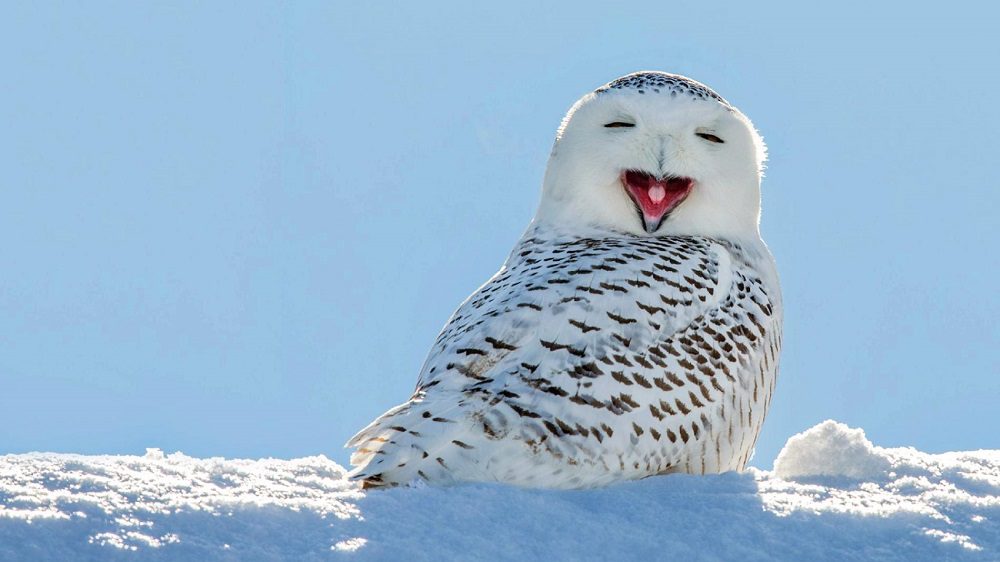
Snowy Owl Breeding & Reproduction
Snowy owls are monogamous and typically mate for life. The male brings food to the female during the nesting period, and she lays a clutch of 2-11 eggs, depending on the food availability. The eggs are incubated for about a month, and the chicks fledge (leave the nest) when they are about 8-10 weeks old.
How Long Do Snowy Owls Live For?
These beautiful creatures have a lifespan of about 10-15 years in the wild, although some individuals have been known to live longer.

Snowy Owl Habitat – Where the Owl Is Found
Snowy owls are found in the Arctic tundra, where they nest on the ground in the open or among rocks. They are adapted to living in cold environments, with thick feathers and a round body shape that helps them retain heat. These owls are also skilled hunters, able to spot prey from great distances thanks to their excellent eyesight and hearing.
Snowy Owl Distribution
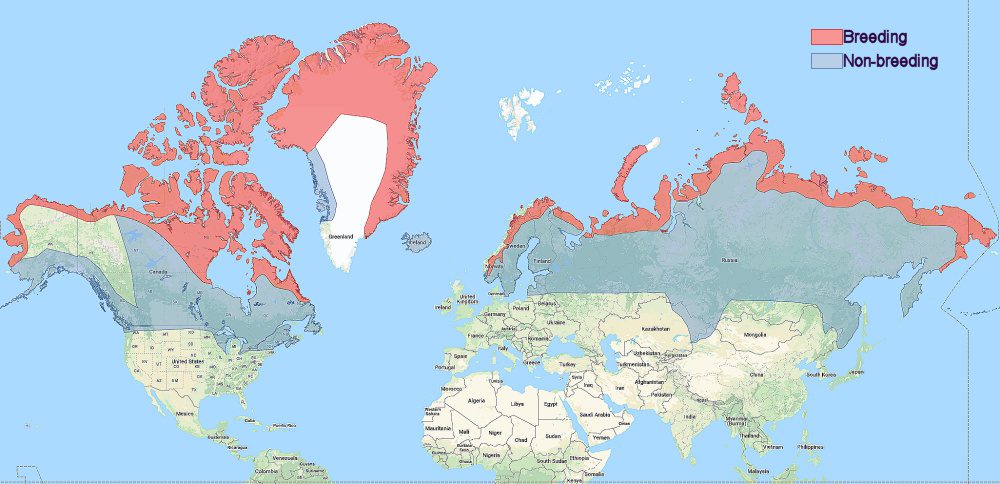
These beautiful creatures are found in the Arctic regions of North America and Eurasia and are well-adapted to living in cold environments.
In North America, snowy owls are found in the northernmost parts of the continent, including Alaska, Canada, and parts of the United States. They are also found in Greenland and throughout much of Europe, including Scandinavia, Russia, and the United Kingdom.
Snowy owls are found in a variety of habitats, including the tundra, grasslands, and wetlands. They are most commonly found in open areas, where they can easily spot prey from a distance. These birds are also skilled hunters and will eat a variety of small mammals, birds, and fish.
Despite their widespread distribution, snowy owls are still considered a species of concern, and their population numbers can fluctuate depending on prey availability.
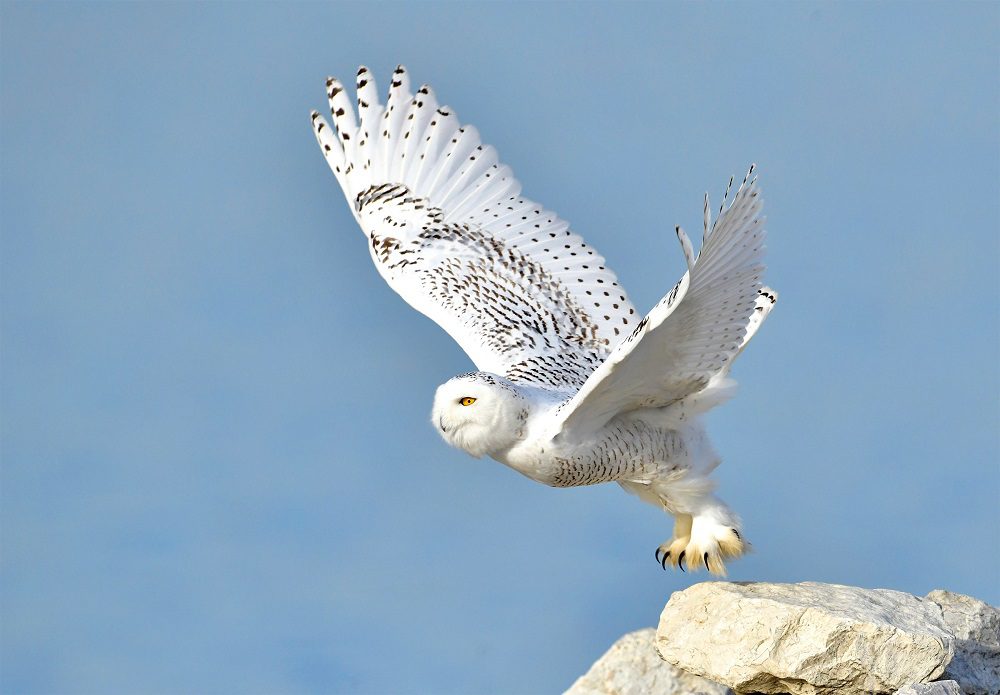
Snowy Owl Environmental Status
Snowy owls are not currently considered endangered, but their population numbers can fluctuate depending on prey availability. They are protected under the Migratory Bird Treaty Act in the United States and the Convention on the Conservation of Migratory Species of Wild Animals in Europe.
People also ask
Do snowy owls eat rats?
Yes, snowy owls are opportunistic hunters and will eat a variety of prey, including rats. Snowy owls are found in North America’s and Eurasia’s Arctic regions, where they hunt various small mammals, birds, and fish.
In addition to rats, snowy owls may also eat other small mammals such as voles, lemmings, and mice. They are skilled predators and use their excellent eyesight and hearing to spot prey from great distances. Snowy owls are mostly active during the day and hunt by perching on a high point and watching for prey.
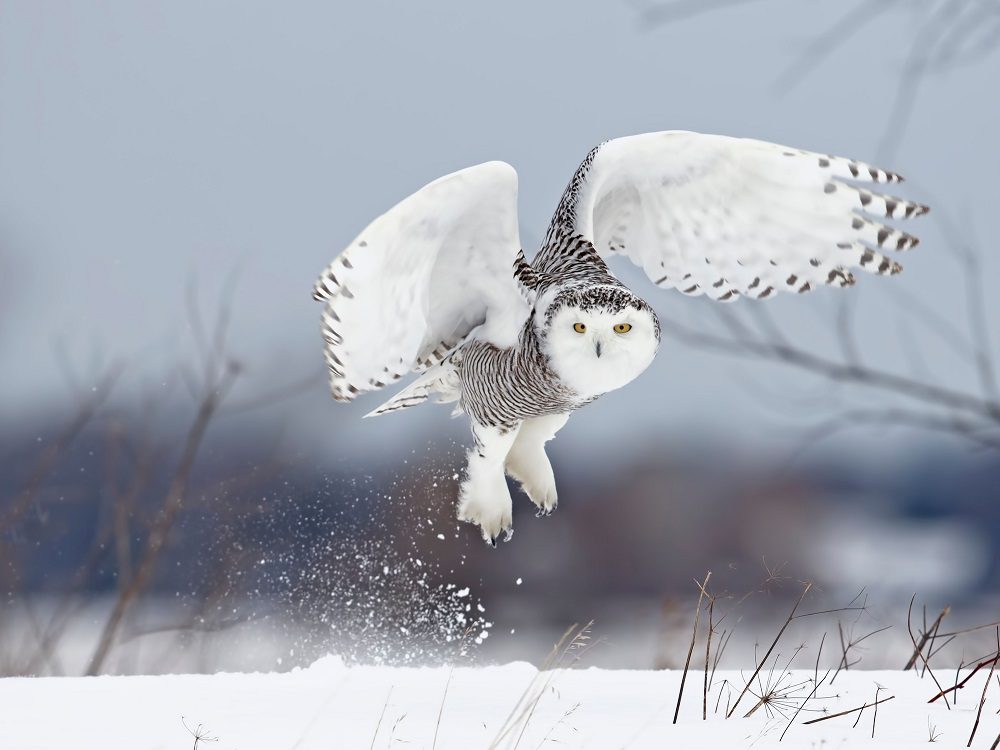
Are snowy owls dangerous?
Snowy owls are generally not aggressive toward humans but may become defensive if they feel threatened. These birds are adapted to living in the harsh Arctic environment and are skilled hunters, preying on small mammals, birds, and fish. To protect their territory and their young, snowy owls may become aggressive if they feel threatened.
During the breeding season, snowy owls may be more territorial and may defend their nesting grounds from perceived threats. In these cases, they may dive-bomb humans who come too close to their nest or attack other animals, including Arctic wolves.
It is important to respect the space of snowy owls and not approach or disturb them, particularly during the breeding season.
While snowy owls are not typically aggressive towards humans, it is important to respect their space and not approach or disturb them. Snowy owls are protected under the Migratory Bird Treaty Act in the United States and the Convention on the Conservation of Migratory Species of Wild Animals in Europe. It is illegal to harm or harass these birds.
If you see a snowy owl in the wild, it is best to observe from a distance and not disturb the bird.
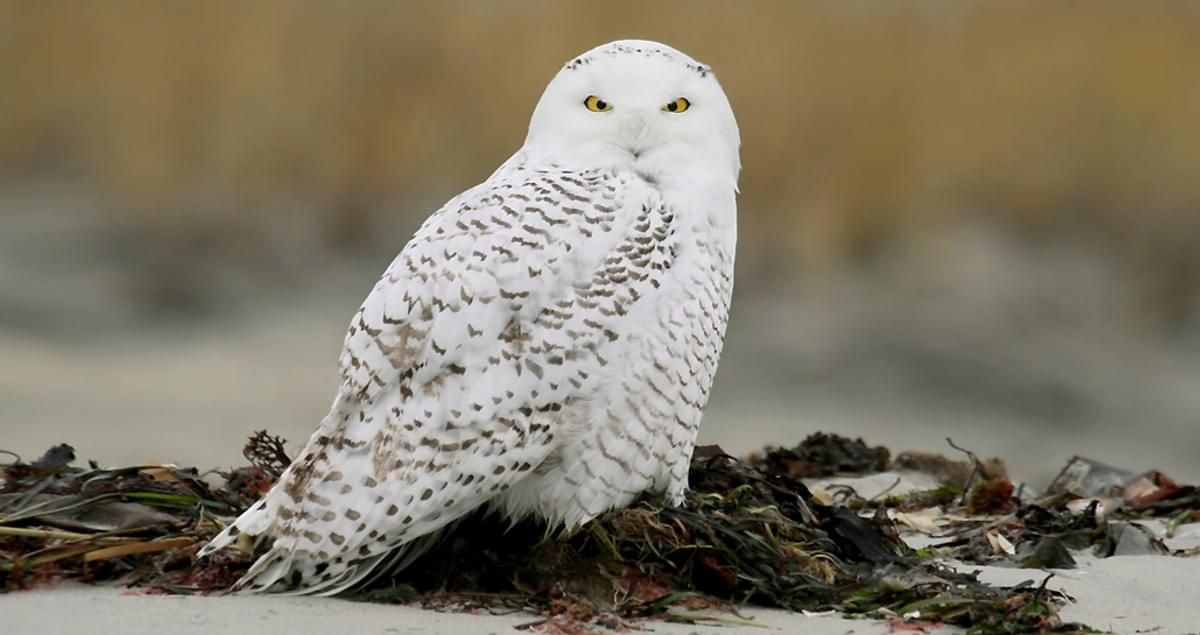
Why are snowy owls disappearing?
It is difficult to determine the exact reason for the decline of snowy owls in some areas, as there are likely multiple factors at play. Some potential causes of declining snowy owl populations include:
- Prey availability: Snowy owls rely on small mammals, birds, and fish for sustenance, and a decline in prey populations can impact the survival and reproductive success of these birds.
- Climate change: Climate change can impact the habitat and range of snowy owls, as well as the availability of prey.
- Habitat loss: Human activities, such as the development of land and the extraction of resources, can result in the loss or degradation of snowy owl habitat.
- Pollution: Pollution, including oil spills and other contaminants, can impact snowy owls’ survival and reproductive success.
- Human disturbance: Snowy owls are sensitive to human disturbance and may abandon their nests or territories if they are disturbed by humans.
Conservation efforts are ongoing to protect and preserve the snowy owl and its habitat. These efforts may include habitat conservation, population monitoring, and implementing protective measures.
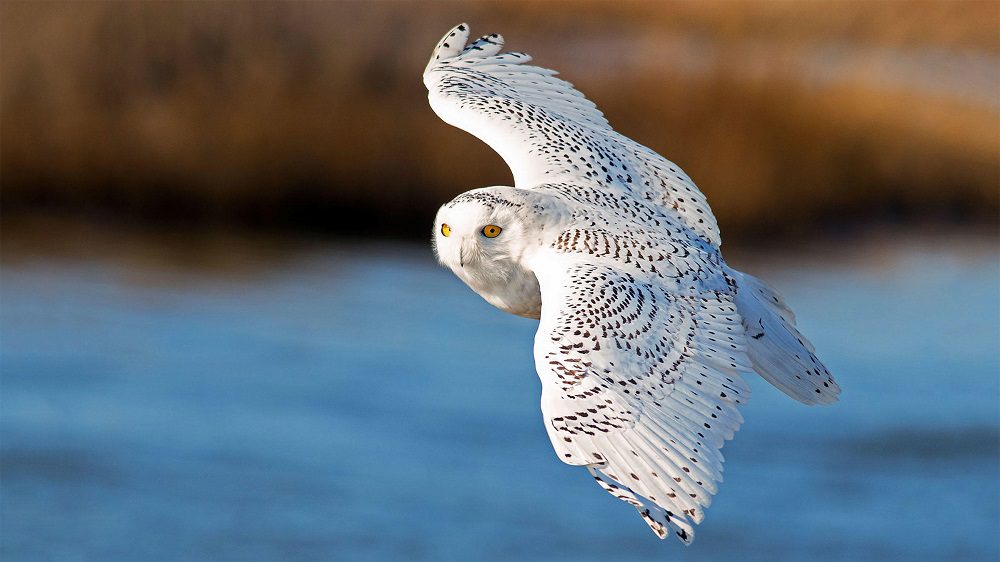
Snowy Owl as a pet
It is generally not recommended to keep snowy owls as pets. These birds are native to the Arctic tundra and adapted to living in a specific habitat and climate. In addition, snowy owls are protected under the Migratory Bird Treaty Act in the United States and the Convention on the Conservation of Migratory Species of Wild Animals in Europe. Capturing, transporting, or keeping these birds as pets is illegal.
Furthermore, snowy owls are wild animals and are not domesticated. They may be difficult to care for and may require specialized knowledge and equipment to meet their needs. They may also be aggressive or territorial, particularly during the breeding season, which can make them challenging to handle.
In addition, keeping wild animals as pets can negatively impact the species, including over-collection from the wild and habitat destruction and degradation. It is important to respect the natural habitat and behaviors of wild animals and to leave them in the wild where they belong. Instead of keeping wild animals as pets, it is better to appreciate them from a distance and to support conservation efforts to protect and preserve their habitats.
Conclusion
The snowy owl is a beautiful and majestic bird that is well-adapted to living in the harsh Arctic environment. With their striking white feathers and piercing yellow eyes, they are a sight to behold. If you’re lucky enough to spot a snowy owl in the wild, be sure to appreciate this magnificent creature from a distance, as they are protected and should not be disturbed.
Resources that provide more information about Snowy Owls
This website, operated by the Cornell Lab of Ornithology, provides detailed information about the biology, behavior, and conservation of snowy owls. It also includes photos, videos, audio recordings of snowy owls, and information on how to identify and attract these birds to your backyard.
The Snowy Owl Project is a research project that aims to study and protect snowy owls in the Arctic. The website includes information about the research being conducted, updates on the project, and photos and videos of snowy owls.
BirdLife International is a global partnership of conservation organizations that work to protect birds and their habitats. Their website includes information about the distribution, habitat, and conservation status of snowy owls, as well as ways in which individuals can help to protect these birds.






































